It works! I love it when a plan comes together.
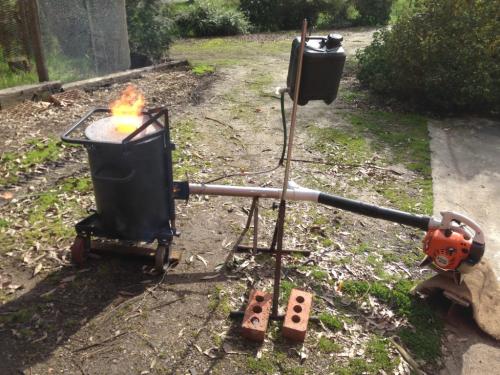
I got a brainstorm for as very simple air control valve, bought a little ball valve and brazed it into the oil feed line to control oil flow, inserted a LPG feed line using a BBQ regulator and compressed air fittings, put it all together and the thing roars.
The air feed valve is a 75mm Y connector that slides along the pipe, the hose clamp provides just enough friction for it to stay where it is put. I shaped the end of the air pipe so it closes off the waste port when the Y-piece is slid all the way on. With my leaf blower at idle, it provides enough air for full heat and the valve enables adjustment during starting.
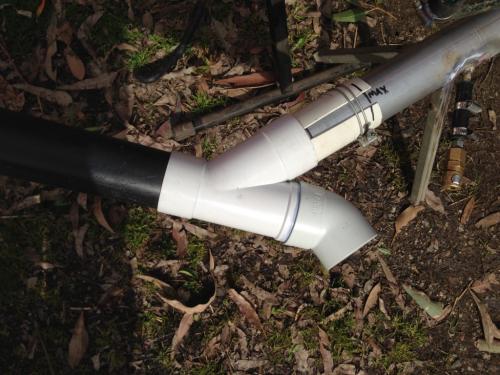
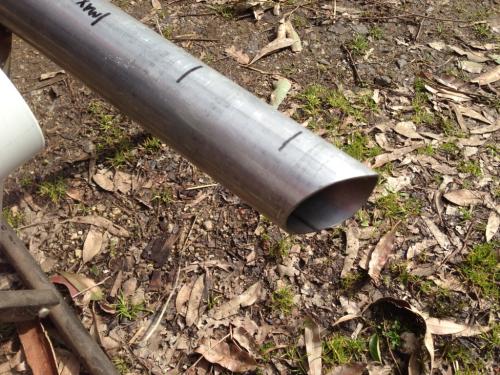
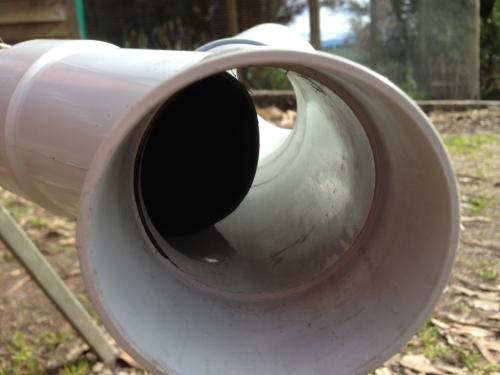
The LPG inlet is an offcut from the oil feed pipe (truck air pipe). It extends about 3" into the air pipe with a bend to direct the gas downstream. I adjusted the BBQ regulator until it was giving a good burn for warming up.
I know my brazing looks crap, I used some coated rods I bought at a farm clearing sale about 5 years ago, don't even know what they are!
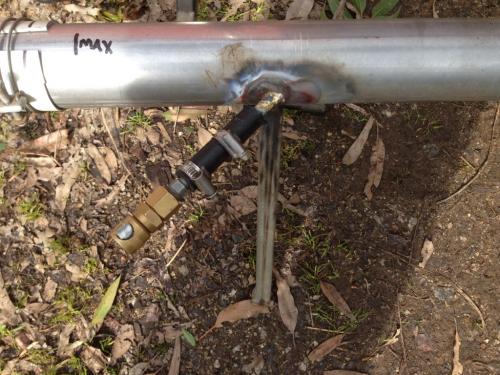
I had to run it on LPG for about 10 minutes to get it hot enough to start the oil, then needed to give it a burst of LPG a few times along with the oil to get it really going. Once it was warmed up and the preheater was firing well, it roared like a jet engine.
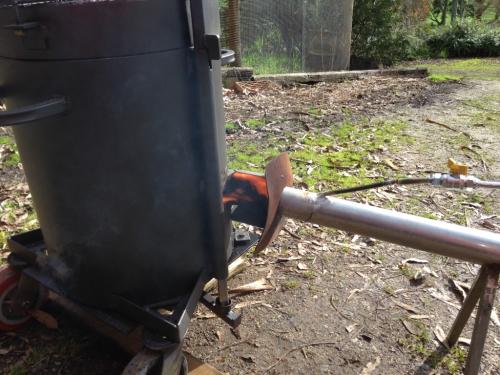
For initial startup I put my oxy-acetylene torch in the tap hole to get the LPG burning. I need to come up with some better ignition solution than this as I want to run the furnace on a different part of my property, away from the shed where the oxy set lives. Unfortunately my little propane torch just gets blown out by the air pressure even at the lowest air flow. I'm open to suggestions for an ignition system, I'm thinking about some sort of spark ignition, like inserting a spark plug up through the tap hole, but I need some portable way to generate the spark.
Anyway this was an absolute hoot finally getting this thing burning under full control. Thanks to those who have offered advice and suggestions.
I still need to make some tools- I've made a pair of tongs for lifting the crucible but nothing for pouring, also of course I think the moulding equipment will be a major project in itself.
So, still a little while before I'm actually pouring metal, but this put a smile on my face.
Lathe (n); a machine tool used in the production of milling machine components.
Milling Machine (n); a machine tool used in the production of lathe components.








